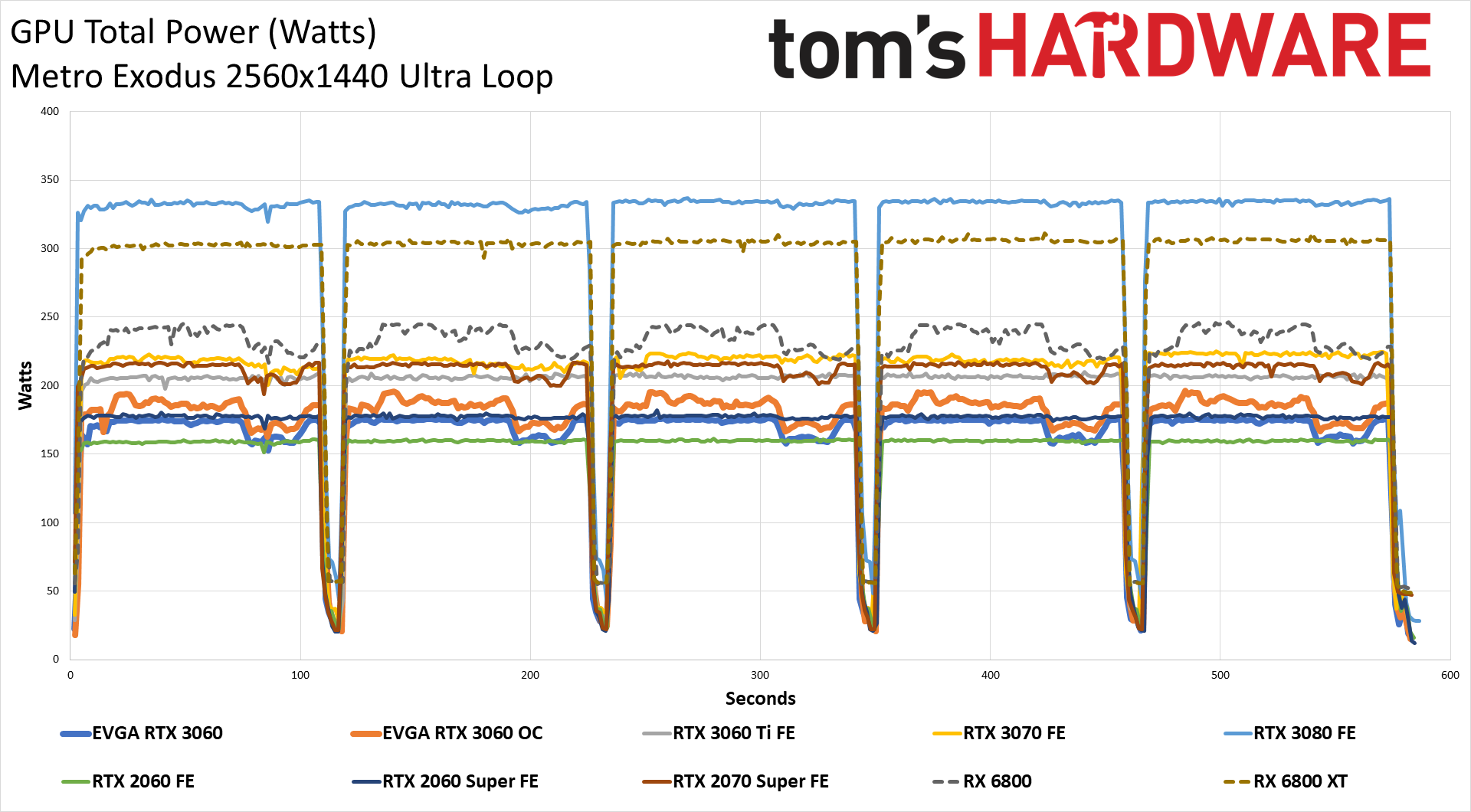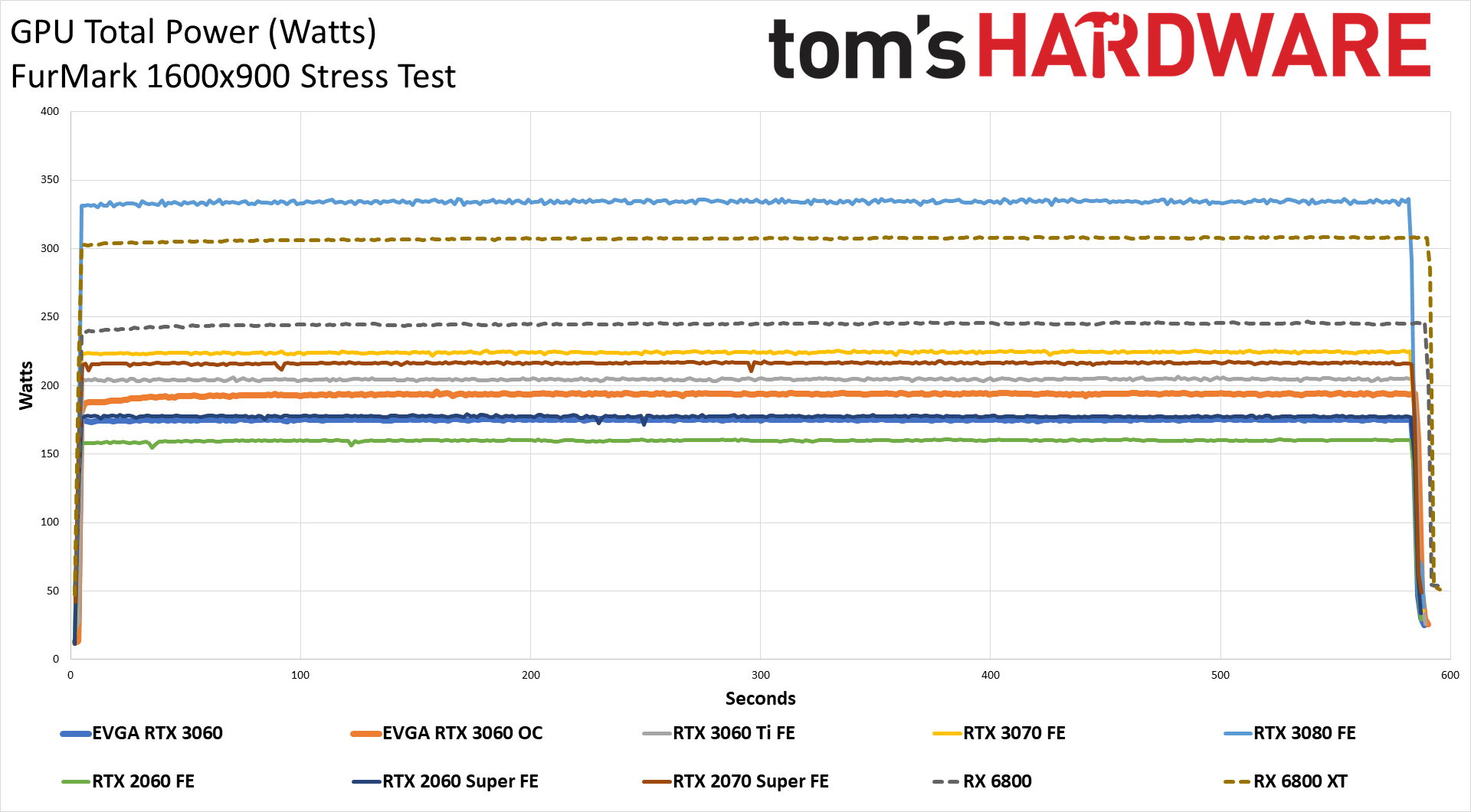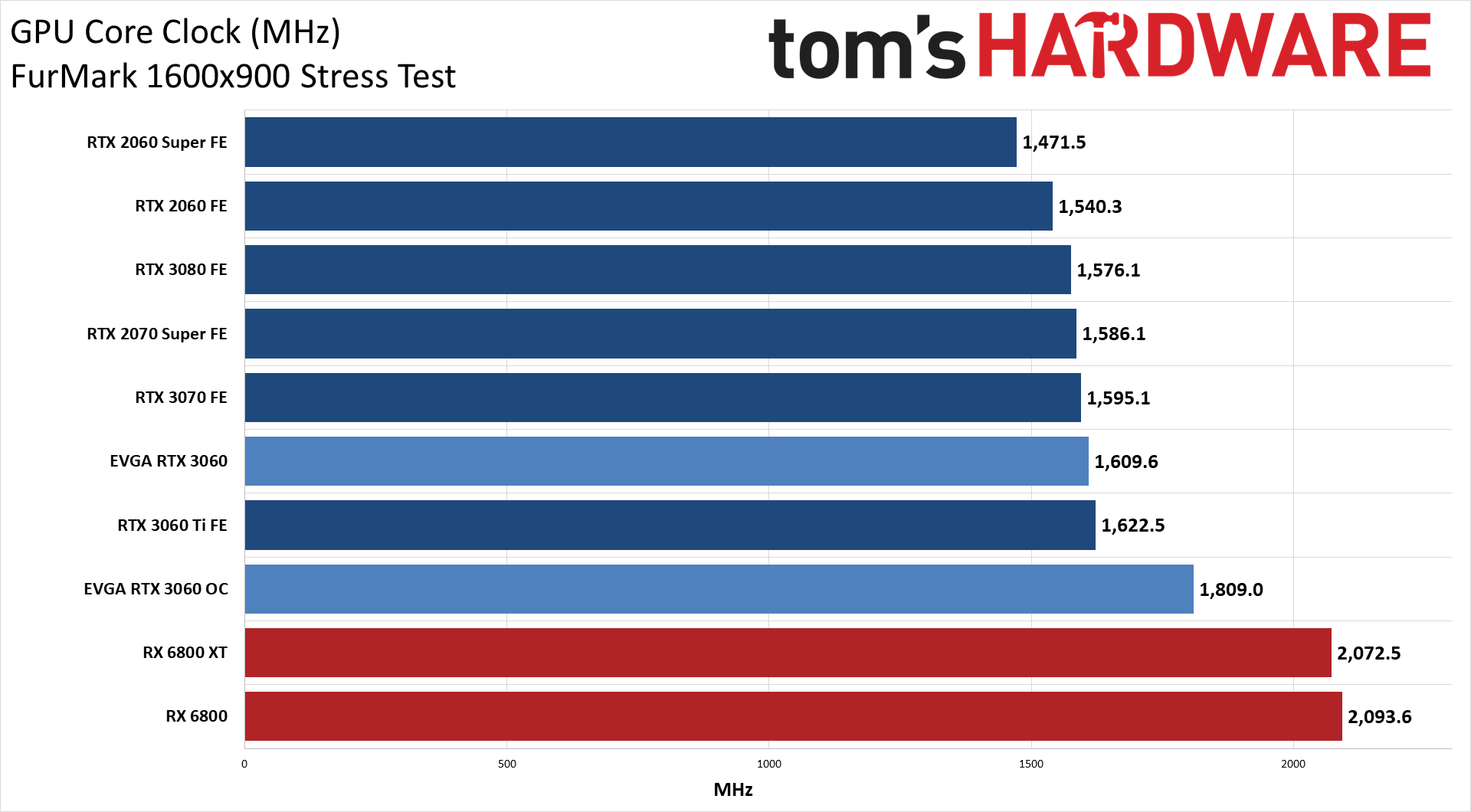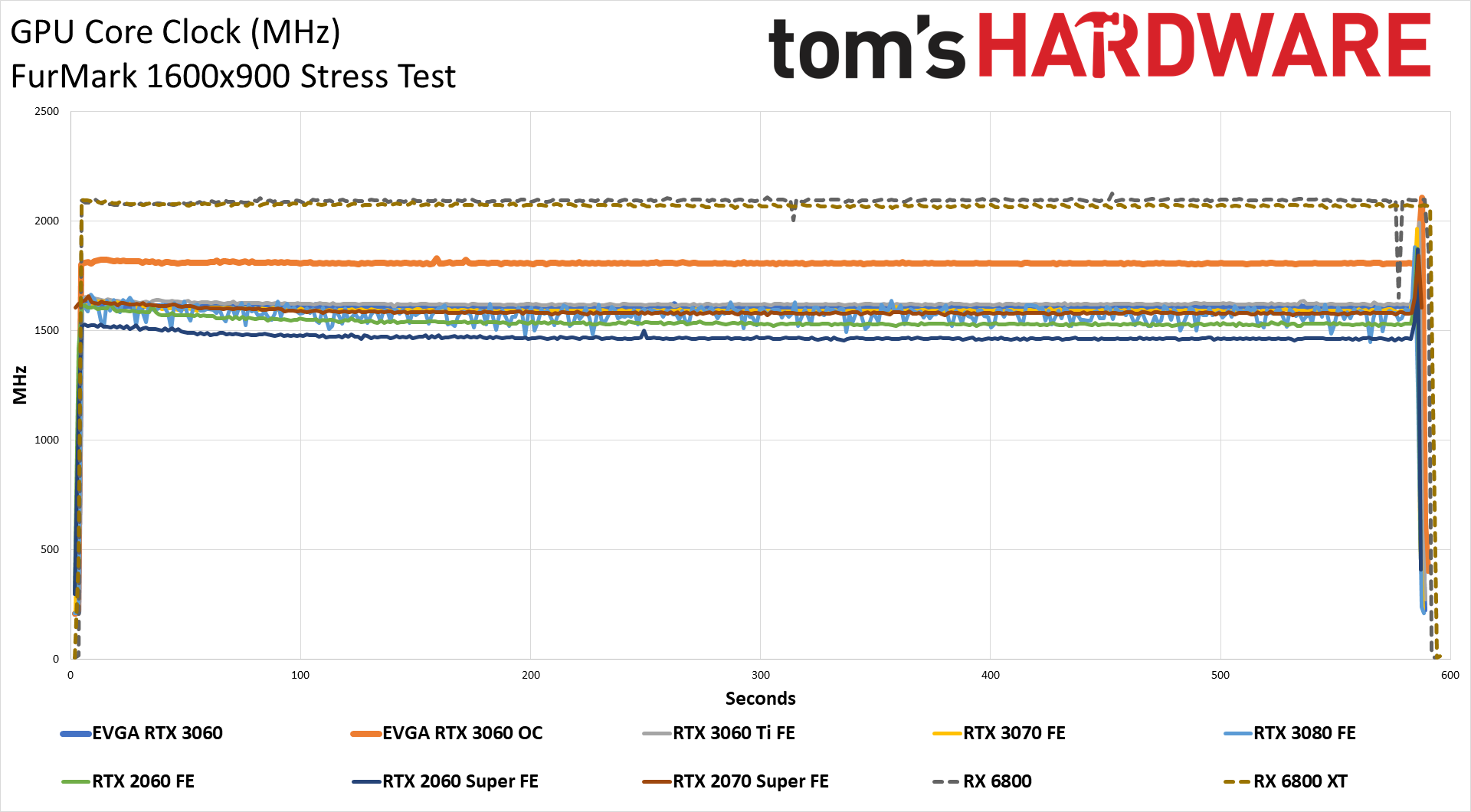Why you can trust Tom's Hardware
Nvidia rates the GeForce RTX 3060 TGP (Total Graphics Power) at 170W, making it the lowest power Ampere GPU by 50W. It has a single 8-pin power connector, and combined with the x16 PCIe slot that's enough for up to 225W of power — more than sufficient headroom for overclocking. We use Powenetics in-line power monitoring hardware and software to collect the real power use of the graphics card, which is relatively close to what software reports for Ampere GPUs. Powenetics also links up with GPU-Z to record the GPU temperature, fan speed, and GPU clock speed.
You can read more about our approach to GPU power testing, but the takeaway is that we're not dependent on AMD, Nvidia or any other GPU vendor to accurately report how much power a GPU uses. We run FurMark as a worst-case stress test, and we also run five loops of the Metro Exodus benchmark at 1440p ultra (without ray tracing or DLSS) for the following charts. Because Metro loops every two minutes or so, you'll see a saw pattern, but maximum power and temperature are pretty consistent.




On average, the EVGA RTX 3060 used 171W in our Metro Exodus test, matching up pretty much exactly with the TGP. FurMark reached a slightly higher power draw of 175W, but that's not particularly worrisome. Our manual overclock bumped that up to 182W in Metro and 193W in FurMark, which is pretty much right in line with the power limit increase for the latter. For gaming purposes, it looks like something else was the limiting factor, at least on the EVGA card.








Temperatures were the same for both our stock and overclocked tests, coming in at 64C on the GPU core in Metro and just one degree higher in FurMark. There's not a huge spread in thermals, mostly because the fan speeds automatically adjust to help keep the GPUs cool, which is where we start to see a lot of separation.
The EVGA RTX 3060 ended up with some of the highest fan speeds we've seen on recent cards. Granted, we've been looking at much larger cards, often with triple fan cooling solutions, but the fan RPMs here are higher than any of the other reference cards we've looked at. Part of that is likely due to the use of old-style fans, rather than the new higher static pressure models with an integrated rim — and the fan selection was likely done to keep costs as low as possible.
That makes EVGA RTX 3060 a less-than-stellar example of a quiet graphics card. It's not horribly loud, but neither is it silent. We measured noise from 15cm away using an SPL meter, with dB(A) weighting and a noise floor of 34 dB. The card's fans turn off at idle (provided the GPU is below 50C), but after gaming for a few minutes the fan speed ramped up to 1940 RPM, or about 71% of maximum. That resulted in 43.1 dB(A) of noise for gaming, and FurMark took that slightly higher to 72% and 43.9 dB(A). Overclocking naturally required even higher fan speeds, around 80% or 2350 RPM, with a very noticeable 49.3 dB result. If you're looking for a quiet RTX 3060, you'll be better off with a larger card that has a bigger heatsink and improved cooling.




Last, we have GPU clocks. With a boost clock of 1777 MHz for the reference cards, the RTX 3060 is the highest clocked Nvidia GPU from the Ampere family so far. As usual, the real-world clocks are even higher than the boost clocks (except in FurMark). The EVGA card averaged 1876MHz in the Metro test, and 1609MHz in FurMark. Overclocking allowed for average GPU clocks of 2085MHz. GA106 doesn't clock quite as high as AMD's Big Navi chips, but we expect we'll see factory overclocked models running at well over 2GHz.
Get Tom's Hardware's best news and in-depth reviews, straight to your inbox.
MORE: Best Graphics Cards
MORE: GPU Benchmarks and Hierarchy
MORE: All Graphics Content
Current page: GeForce RTX 3060: Power, Temps, Fan Speeds, and Clock Speeds
Prev Page GeForce RTX 3060 Gaming Performance Next Page EVGA GeForce RTX 3060: Diminishing Returns
Jarred Walton is a senior editor at Tom's Hardware focusing on everything GPU. He has been working as a tech journalist since 2004, writing for AnandTech, Maximum PC, and PC Gamer. From the first S3 Virge '3D decelerators' to today's GPUs, Jarred keeps up with all the latest graphics trends and is the one to ask about game performance.

